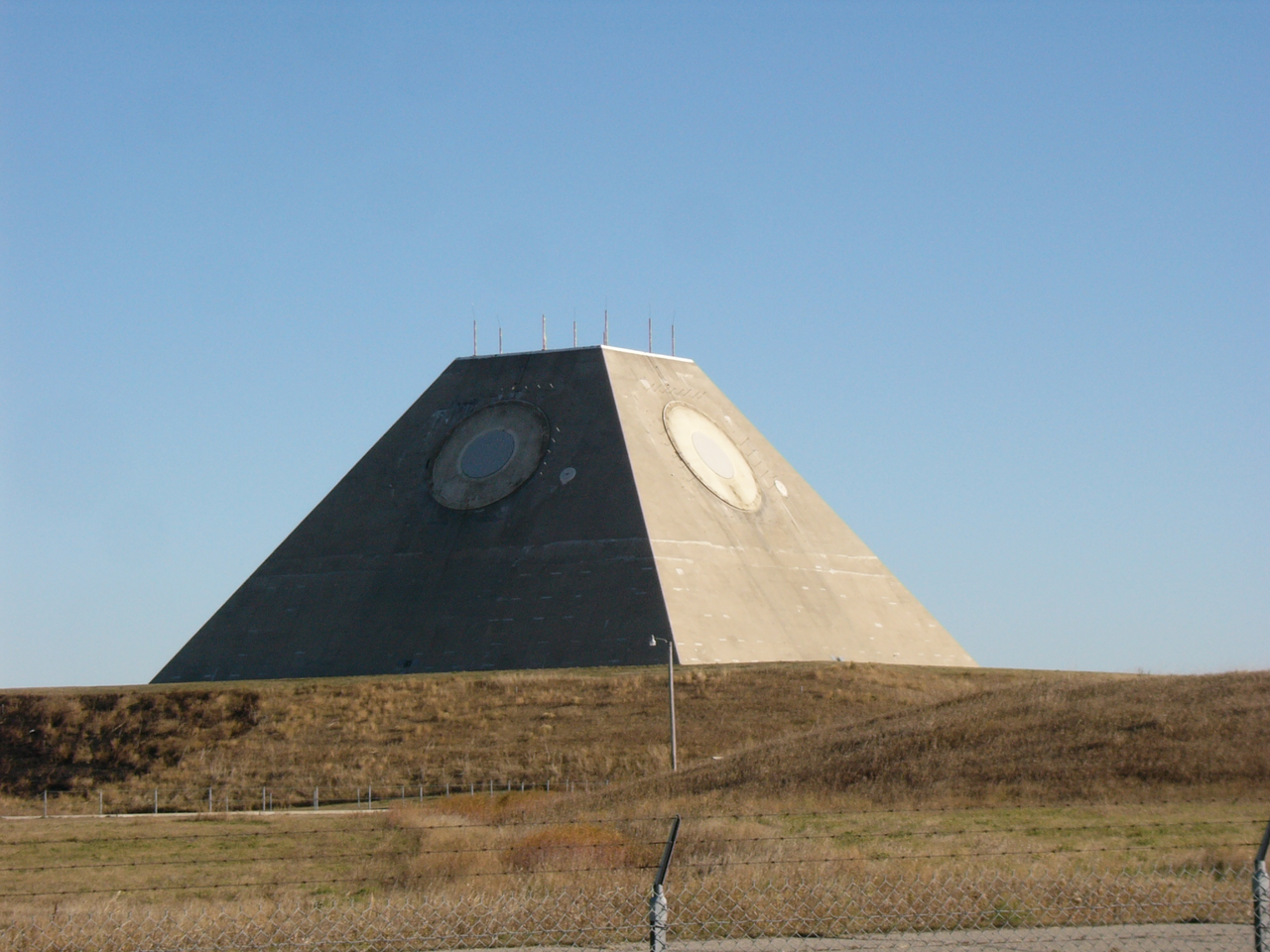- Jul 1, 2018
- 1,606
 | 
United States Department of Defence |  |
Encrypted Documents Radar systems and missile defence
Precision Acquisition Vehicle Entry Phased Array Warning System 
Raytheon AN/FPS-126 Solid State Phased Array Radar  Radar Systems: 3 / 5 Locations: Beale Air Force Base, California Clear Air Force Station, Alaska Cape Cod Air Force Station, Massachusetts Safeguard Program Perimeter Acquisition Radar  Anchorage, Alaska
Corpus Christi, Texas San Diego, California Jackson, Oregon Lisbon, Maine Fort Lauderdale, Florida LIM-49 Spartan  Created: 200 Savannah, Georgia (x25)
Newark, New Jersey (x25) San Franciso, California (x25) Henderson, Navada (x25) Sterling, Alaska (x25) Kent, Washington (x25) Guam, Guam (x25) Francis E. Warren Air Force Base (Storage) (x25) Coastal Defences Four Quad Harpoon Granit Launchers in Every port/Naval Facility/ Coastal City 
(Each Quad Launcher looks like this) Back up Defences Demolition Chambers under EVERY bridge in the US 
Anti-Tank Bollards in EVERY American City, Town, Village, Border crossings etc. (Can be raised and lowered) 
Shore Range Projectile Defence Centurion C-Ram 
Created: 56 Alert Systems 
Current state: DEFCON 3 Civilian fallbacks Fallout shelters These do not fall under a military system but instead a system to protect the Citizens of the US. A fallout shelter is an enclosed space specially designed to protect occupants from radioactive debris or fallout resulting from a nuclear explosion. Many such shelters were constructed as civil defense measures during the Cold War. During a nuclear explosion, matter vaporized in the resulting fireball is exposed to neutrons from the explosion, absorbs them, and becomes radioactive. When this material condenses in the rain, it forms dust and light sandy materials that resembles ground pumice. The fallout emits alpha and beta particles, as well as gamma rays. Much of this highly radioactive material falls to earth, subjecting anything within the line of sight to radiation, becoming a significant hazard. A fallout shelter is designed to allow its occupants to minimize exposure to harmful fallout until radioactivity has decayed to a safer level. A basic fallout shelter consists of shields that reduce gamma ray exposure by a factor of 1000. The required shielding can be accomplished with 10 times the thickness of any quantity of material capable of cutting gamma ray exposure in half. Shields that reduce gamma ray intensity by 50% (1/2) include 1 cm (0.4 inch) of lead, 6 cm (2.4 inches) of concrete, 9 cm (3.6 inches) of packed earth or 150 m (500 ft) of air. When multiple thicknesses are built, the shielding multiplies. Thus, a practical fallout shield is ten halving-thicknesses of packed earth, reducing gamma rays by approximately 1024 times (210).Dry earth is a reasonably good thermal insulator, and over several weeks of MNitation, a shelter will become dangerously hot. The simplest form of effective fan to cool a shelter is a wide, heavy frame with flaps that swing in the shelter's doorway and can be swung from hinges on the ceiling. The flaps open in one direction and close in the other, pumping air. (This is a Kearny Air Pump, or KAP, named after the inventor, Cresson Kearny) Unfiltered air is safe, since the most dangerous fallout has the consistency of sand or finely ground pumice. Such large particles are not easily ingested into the soft tissues of the body, so extensive filters are not required. Any exposure to fine dust is far less hazardous than exposure to the fallout outside the shelter. Dust fine enough to pass the entrance will probably pass through the shelter. The shelters, also have an incorporate NBC-filters for additional protection. A battery-powered radio may be helpful to get reports of fallout patterns and clearance. However, radio and other electronic equipment may be disabled by electromagnetic pulse. For example, even at the height of the cold war, EMP protection had been completed for only 125 of the approximately 2,771 radio stations in thethe US Emergency Broadcast System. Also, only 110 of 3,000 existing Emergency Operating Centers had been protected against EMP effects. The reference Nuclear War Survival Skills includes the following supplies in a list of "Minimum Pre-Crisis Preparations": one or more shovels, a pick, a bow-saw with an extra blade, a hammer, and 4-mil polyethylene film (also any necessary nails, wire, etc.); a homemade shelter-ventilating pump (a KAP); large containers for water; a plastic bottle of sodium hypochlorite bleach; one or two KFMs and the knowledge to operate them; at least a 2-week supply of compact, nonperisMNle food; an efficient portable stove; wooden matches in a waterproof container; essential containers and utensils for storing, transporting, and cooking food; a hose-vented 5-gallon can, with heavy plastic bags for liners, for use as a toilet; tampons; insect screen and fly bait; any special medications needed by family members; pure potassium iodide, a 2-oz bottle, and a medicine dropper; a first-aid kit and a tube of antibiotic ointment; long-burning candles (with small wicks) sufficient for at least 14 nights; an oil lamp; a flashlight and extra batteries; and a transistor radio with extra batteries and a metal box to protect it from electromagnetic pulse. Each shelter will have an oxygen farm. There would be enough storage in each shelter to feed each person for a year if not rationed. But it will be rationed to have longer lasting food. InMNitants should have water on hand, 1-2 gallons per person per day. Water stored in bulk containers requires less space than water stored in smaller bottles. Eight shelters will be built in or around everycity so that everyone can have access to safety. |
Last edited:


